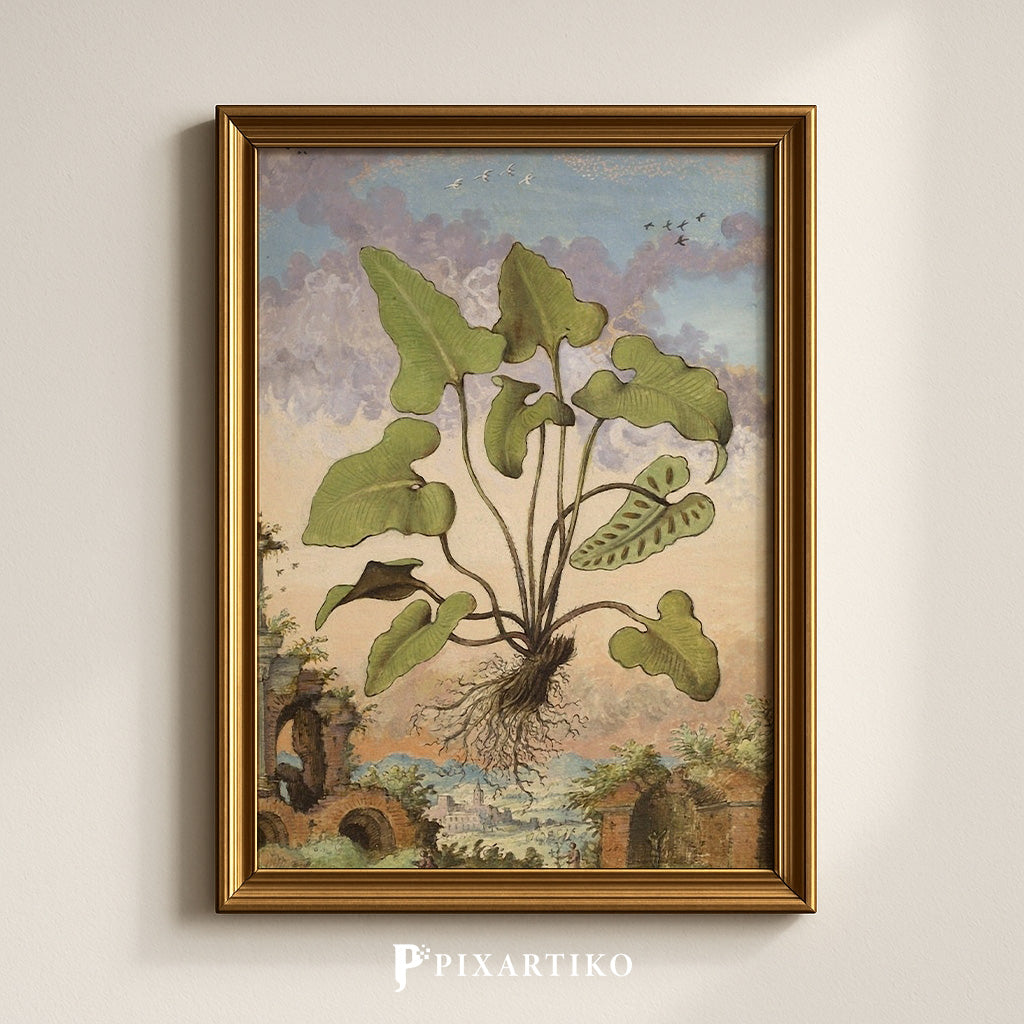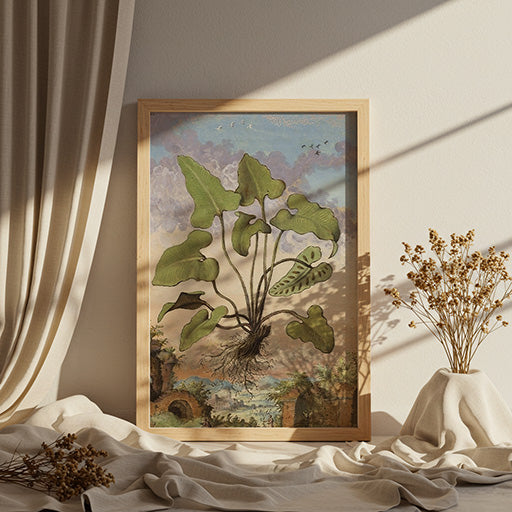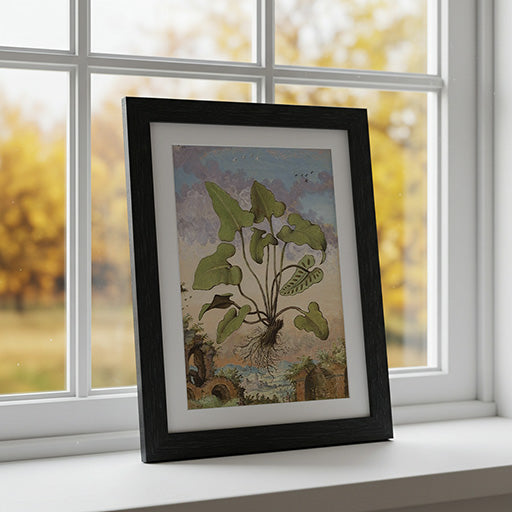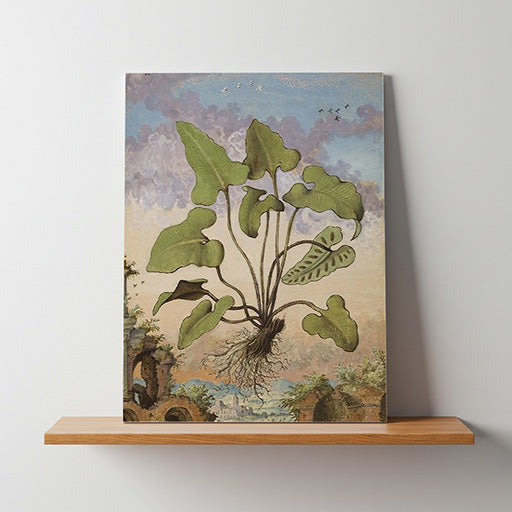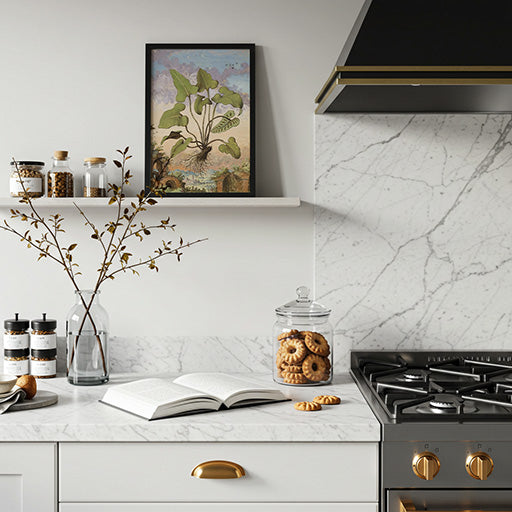Phyllitis hemionitis | Vintage Botanical Print
Phyllitis hemionitis | Vintage Botanical Print
No se pudo cargar la disponibilidad de retiro
Vintage Botanical Print | 16th-Century Fern Illustration | Antique Herbal Art | Printable Plant Wall Decor | Digital Download
Add classical charm to your space with Phyllitis hemionitis, a rare botanical watercolor illustration from the 16th century by Italian artist and botanist Gherardo Cibo. Taken from Mattioli’s expanded edition of Dioscorides’s De Materia Medica, this artwork highlights the distinctive fern-like plant against a majestic backdrop of Roman ruins and countryside.
Perfect for collectors of vintage botanical prints, natural history art, herbal medicine decor, and printable antique illustrations.
➤ Instant digital download
➤ High-resolution file, print-ready
➤ Ideal for academic interiors, cottagecore wall art, fern and foliage decor, or herbalist spaces

Pixartiko Collective – Usage License
Prints allowed for personal use and resale only as physical products in local shops. Use in other physical goods permitted if pixartiko.com is credited when possible.
Digital resale, sharing, or publishing is strictly forbidden.
Designs are not public domain and cannot be distributed online.
© pixartiko.com – All rights reserved.
Print Sizes
🖼 Included Print Sizes (No Cropping Needed)
This high resolution digital file is optimized for printing at the following standard sizes, no cropping or borders required. Just download, print, and frame:
| Inches | Centimeters | Suggested Use |
|---|---|---|
| 11.7 x 16.5 | A3 – 29.7 x 42 | Wall art, poster, vertical frame |
| 8.3 x 11.7 | A4 – 21 x 29.7 | Standard frame, home office decor |
| 5.8 x 8.3 | A5 – 14.8 x 21 | Small prints, journaling inserts |
| 4.1 x 5.8 | A6 – 10.5 x 14.8 | Greeting card, mini gift |
| 7 x 10 | 17.8 x 25.4 | Portrait print, versatile framing |
| 5 x 7 | 12.7 x 17.8 | Classic photo size, shelf display |
🖨️ All sizes are print-ready at 300 DPI, maintaining the original image ratio. No cropping or borders required.
📂 Your download includes:
- 1 high resolution JPEG file (2134 x 2988 px).
- Artistic Declaration Certificate in PDF.
- Free gift: The Ages of Painting guide — a visual journey through the history of painting.
🎨 Need a different size or format?
No problem! Just send me a message and I’ll be happy to adapt it for you.
Art Review
“Phyllitis hemionitis” by Gherardo Cibo: A Fern in Flight Above the Ruins of Time
In “Phyllitis hemionitis”, Gherardo Cibo elevates a modest woodland fern into a vision of lyrical defiance — one that hovers, almost weightless, above the architecture of a fading empire. This is botanical art as metaphysical allegory: a celebration of life’s quiet persistence amid decay.
The composition is both surreal and sublime. The fern, typically found nestled in forest shade or the cracks of ancient stones, appears here suspended midair — its roots exposed, its tender green fronds rising like a bouquet offered to the sky. Some leaves are smooth, others curled or blotched, including one detailed with spores, revealing the underside of its life cycle. In true Renaissance spirit, Cibo does not shy away from imperfection; instead, he highlights it as part of the plant’s vitality.
What makes the image so haunting is the background: crumbling classical ruins, archways choked by time, and a distant city dissolving into a soft atmospheric haze. The juxtaposition is striking. Stone gives way to root. Monument yields to leaf. Civilization crumbles, but the fern endures.
Cibo’s palette is muted yet rich — pale pinks, sky blues, mossy greens — evoking the fading light of a late afternoon or a passing era. Birds arc through a cloud-laced sky, echoing the curvature of the plant’s stems. The whole work is an act of quiet resistance, a declaration that even the humblest organism is worthy of monumentality.
“Phyllitis hemionitis” is not merely an illustration. It is a philosophical statement rendered in watercolor. The plant floats above history — not untouched by time, but untouched by its grandeur. In Cibo’s vision, permanence lies not in stone, but in growth; not in empire, but in adaptation.
This is a masterpiece of gentle radicalism. With a fern as his subject, Cibo reminds us that survival is an art form, too — and sometimes, it is the smallest things that rise highest.

Share
